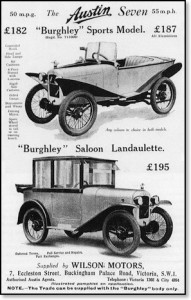iPhones clearly exercise the most extraordinary fascination upon the American mind. It’s impossible to go anywhere today—restaurants, airports, hospital waiting rooms, ballgames—without encountering hordes of people staring, seemingly witlessly, at tiny rectangular screens.
It’s not so different, I suppose, from the New York daily commute s of 30 years ago when like numbers of people were similarly engrossed in newspaper crossword puzzles.
Even so, newspapers and crosswords feel somehow more wholesome than iPhones. Perhaps it’s a matter of size, but the sight of folks apparently mesmerised by a broadsheet or even a tabloid is not as “other-worldly” as people transfixed by a tiny shimmering rectangle. Yet they say this is progress!
Before we embrace unreservedly the notion of that progress is invariably good, remember the genii who brought us the iPhone et al. are the same sort of technocrats—albeit on a rather higher plain—as the creators of the modern toaster and refrigerator. And nobody in their right minds can claim we’ve seen progress in these spheres.
It is, I submit, impossible to find a toaster today that actually toasts. Our recent toasters have boasted two settings—warm, white, and soggy, or scorched, black, and crunchy.
What’s more, after a couple of years on our kitchen counter, they can generally be relied upon to yield up the ghost and take off for the great electronic graveyard in the sky.

Sunbeam T-20 toaster, from toaster.com
The same thing goes for her refrigerator. (Well, she called it an icebox.) She bought it at about the same time as the toaster, and it is still chilling beer in the basement of the neighbour who bought the thing when she sold up and moved out.
Charlotte and I, by contrast, are on our third refrigerator in a dozen years. And, despite all the bells and whistles, we still have to buy ice every time we have a family party.
The one product in which we have seen genuine progress is the automobile. In the 1970s, ’80s, and even the ’90s it was difficult to find a car that didn’t require monthly trips to the shop to repair some small, seemingly obscure but obviously vital, part.
Today one can drive them for 7,000 miles between oil changes with nary a hiccup. Of course, servicing the blessed things — oil changes and the like — costs an arm and a leg, so the increased reliability isn’t actually reflected in the pocket book. Savings are largely counted in reduced frustration and stress.
Come to think of it, though, what we think of progress in the realm of automobiles was simply a return to the status quo.

Advert for the Austin 7, from Austin Memories
During that time, I put oil in the engine and the rear differential largely when the spirit moved me. But it just kept on trucking.
Eventually, in a display of shameless profiteering, I sold it for $300 to an airman who desperately needed to go to Scotland. I never heard from him again, so I guess it must have gotten him there.
Admittedly, the little Austin had rather fewer things to go wrong with it than the modern family sedan. It had a three speed, crash gearbox, cable brakes, and cable steering. Road-handling might, thus, best be described as somewhat less than responsive.
It was also lacked a starter motor, so to it had to be hand cranked. What’s more, it had a dynamo rather than an alternator. As a consequence, every time you took your foot off the gas pedal the lights went out. Night driving was, thus, more than a little hairy.
No less disconcerting, it did not have a fuel pump. Instead the carburettor was filled from a “drip feed” fuel tank located behind the dashboard. This meant that the only way to climb relatively modest hills was backwards.
These minor inconveniences, however, were but a small price to pay for an entirely trouble–free driving experience. After the Austin Seven, I went to the opposite end of the automobile spectrum with equally satisfying results in terms of reliability. For $350 I acquired the ultimate in automotive sophistication: a Rolls-Royce.
The reason it was so cheap is that it was a 1933 model hearse in the process of being retired by a local undertaker. “It’s bit worn in second,” he warned me mordantly.
Even so, it had a remarkably smooth ride, a handsome walnut dashboard, headlights twice the size of soup plates, and a most impressive turn of speed. The bier had been removed from the back, which created a cavernous luggage space. I thought it had the makings of an excellent camper.
Sadly, nobody seemed to share my opinion. Girls point blank refused invitations to a trip to the movies if it meant riding in the darned thing. My friends all seemed to have prior engagements when I proposed camping expeditions. Moreover, when I parked at campsites, the folks next to would invariably pack up their kit and move to another part of the field.
It was the nearest thing I have experienced to an Amish “shunning.” So reluctantly, I sold it to a farmer, who converted it to a pickup truck, for $50 less than I paid for it.
There’s a price to pay for being ahead of the pack, which why I don’t yet own an iPhone. Sometimes the only way to be “progressive” is to be totally opposed to progress. GPH✠


